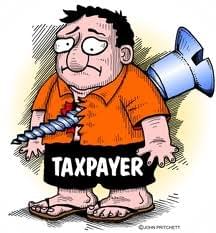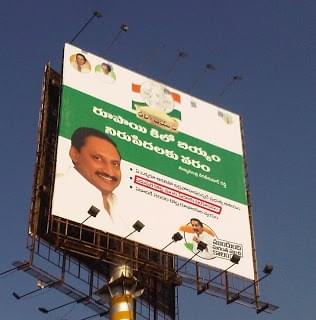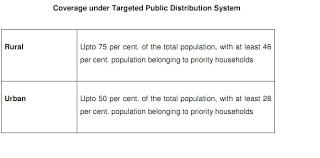Commentary
The tax payer is the most abused person in the country
Sudhir
Dec 22, 2011, 02:03 PM | Updated Apr 29, 2016, 02:41 PM IST
Save & read from anywhere!
Bookmark stories for easy access on any device or the Swarajya app.


Earn money, pay tax. Buy a vehicle, pay road tax. Buy an ice-cream, pay service tax. On all these taxes, pay more tax for “education cess”. Get “fringe benefit” from your company, pay tax. If you give “fringe benefit” to employees, pay tax. And on top of your corporate tax, pay more tax for “education cess”. Register your house, pay tax. Invest money, pay tax on returns from that investment. Buy goods, pay Value added tax. Buy liquor, pay tax. Essentially, pay tax when you earn and spend. For 2010-2011, the money earned by the government of India from various kinds of taxes is Rs. 7,46,65,10,00,000/- only. Approximately Seven lakh crores.
But the moment the tax payer actually wants better roads for which he is paying money, s/he is derided. How shameless of you to demand from an already over-burdened, over-worked government to make proper use of your money? The moment a tax payer wants to know where exactly the “education cess” is going, lectures are reeled out on how the payee is out of touch with reality and how s/he should travel to the villages to know how bad the education system is.
TV channels shout from the roof-top – “tax payer’s money being wasted”, but when the “tax payer” actually comments on current affairs/politics, s/he is immediately labelled saying, “but you don’t vote”. Actually it works two ways – if you are not familiar with current affairs, you are derided. If you are familiar, then you are derided too!
Rupees Seven lakh crores is what the tax payer gives the government and then s/he has to face the question – “What is it that you are doing for the country?” Embarrassing, no? Even more embarassing, when you are just expected to pay and not lament/comment on how it is being spent!
And that’s precisely what this rant is going to be. I have serious issues with how the money is being spent.abused. And because I make a contribution (though minuscule percentage) to that large tax treasury, I am taking the freedom here to vent out my complaints. And yeah, I do vote. And I did not vote for the Congress, so please to spare me the “you voted for this government, so live with it” argument.
The picture below is a hoarding near the Jubilee Hills junction in Hyderabad. It talks about the boon to the poor – Rs.1/kg rice scheme. Apologies for the angle at which it was taken – we were on a bike and could not stop for a better angle. Nevertheless, I marked in red the important point in the hoarding, which when translated reads thus:

See now I have a problem with this number. The census of 2011 puts the population of AP at 8.46 crores. Doing some complicated math, we can conclude that the AP government has classified a meagre 88.65% of it’s population as “poor”. The civil supplies minister also announced that about 25 lakh applications for a white ration card are pending. And because the Chief Minister does not want “anyone to sleep with hunger”, he reduced the cost of rice from a whopping Rs.2/kg to Rs.1/Kg !
I sincerely apologise if my understanding is wrong, but shouldn’t any self respecting government do more to bring people out of poverty than to push them into poverty? Is it wrong to expect that the policies of the government should enable more poor people to become self sufficient and grow along with the economy? But gee – how insensitive can I get? I, the salaried class, the luxuried class – have the guts to mock the meagre 88.62% poor and their capacity to pay? How arrogant of me to actually contribute money for schemes like this and yet question their sanctity stupidity!
And then came along the National Food Security bill. This time, I did not want to be arrogant, ill-informed, ignorant etc. And right at that point of time, much to my staggering good luck, the Editorial Director of NDTV tweets:
“Incredible to hear Amartya Sen,Jean Dreze explain lucidly &eloquently, why India cant afford NOT to have a Food Security bill.9:30pm,Sunday”
So now I eagerly wait for Sunday to come. Now, I know that all my insensitive doubts about this massively expensive food security bill will be cleared by the panel of experts. And at the beginning of the show, the scroll reads:
“More children die in India at birth than in Bangladesh and Nepal.”

Well, given that the population of India is much much more than Bangladesh and Nepal put together, wouldn’t the actual number of children dying also be more? But we digress. The show begins, and for about 15 minutes, no concrete statistics are put out. No numbers whatsoever. The eternal rhetoric of the need to feed the poor etc goes on. And then a comment by a man from Gorakhpur. This man has a genuine complaint about nutrition in food and also the need to tackle deadly diseases like encephalitis. And the discussion veers towards health care, which has no connection to the Food security bill.
What the man wanted was proper health care, which is a perfectly genuine demand and I bet no tax payer in this country will object if the government chooses to spend on health care. The show moved on to corruption, economy blah blah, that I lost interest. I did not know anything new after the 20 minutes that I watched it. On top of this, one of the journalist on the show thinks that the food bill “guarantees free ration“!
So, I made one more attempt. PRS Legislative site had put up the draft of the food security bill.
Every person belonging to priority households and general households,.. shall be entitled to receive every month from the State Government,.. such quantity of foodgrains at such prices as may be specified in Schedule I .


The current Public Distribution System classifies card holders into three categories.
- Above Poverty Line
- Below Poverty Line
- AAY – Antyodaya Anna Yojana.
AAY identifies 1.5 crore poorest of the poor families in the country. And then gives them rice at Rs.3/kg and wheat at Rs.2/kg (35kgs per family). 1.5 crore poorest of the poor families means about 6-8 crore people in the country, which is about 0.06% of the population.
This was in the year 2000. In the year 2011, the central government wants to increase this 0.05% to 46% rural and 28% urban “poor people”. Is this progress? Is this what we have reduced “aam aadmi” to?
Anyways, the devil always lies in the detail. 7kgs of “foodgrain” per person. Foodgrain is defined as ” rice, wheat or coarse grains or any combination thereof “. So therefore a four member family has to come up with a combination of its needs. Let’s do some complicated math.
Currently, various states (with the exception of visionary states like AP) give rice at Rs.3.50-Rs.5.50 range to BPL families. Assuming a four member family gets 21 kg of rice at Rs. 3 instead of Rs.5.50/-, they are saving a whopping 21*2.50 = Rs. 52.50 per month. Wheat is sold at Rs.7 a kg in AP. Assuming that is the national average – there’s a further saving of 7*5= Rs.35. A total of Rs.87.50 per month per family. Is our country in such dire straits that 46% of our rural population are thrilled at the prospect of saving about 3 rupees per day? Is it is not a grave setback that we are actually encouraging them to entitlements like this, and giving them false hope that this price will remain low for a long time?
The next small detail – Rs.1/kg for coarse grains.
The average shelf life of coarse grains is limited, making them unsuitable for long-term storage and distribution under PDS. The inclusion of coarse cereals under PDS cannot be taken up as a national level programme since there is no standard variety of coarse grain. However, initiatives on the part of state governments catering to the needs of specific localities are possible.
No, those above observations are not by those wretched tax payers. It is an observation made by the planning commission, in it’s 10th Five Year plan (2002-2007). Just about 10 years ago, the planning commission observed that coarse grains cannot be distributed through PDS. But this is 2011, which means another five year plan has come up. Take a look at the PDS section in 11th five year plan. No mention at all about the coarse grains. None.
So now we have no plan on how to store and distribute the grains, but we have a bill which wants to distribute this at Rs.1/kg to 46% rural population and 28% urban population.
A small complication here. The bill limits the subsidy to “upto 75% of rural and 50% urban population”. What about my state, Andhra Pradesh then? We have a meagre 88.6% people…

Now, let’s take a look at the burden on the government for this hare-brained scheme. The picture of the hoarding is another example. The burden for giving rice at Rs.1/kg to 7.5 crore people is Rs.2600 crore. According to the current Food bill, it looks like about 75 crore people are the intended beneficiaries. So after doing some complicated math, we arrive at a conservative estimate of ~Rs. 26,000 crore per year. And this is with respect to subsidy on one food grain. A conservative estimate of subsidy on three foodgrains can be put at Rs. 50,000 crore. Where will this money come from, year over year? Remember the tax payer?
Phew!
Did you think the the bill is done? No, more is yet to come. “Nutritional food to children from 6 months to 6 years, every day, free of charge.” and “Nutritional food as part of mid-day meals for children from 6-14 years, except on school holidays“. Remember the “education cess” you pay on top of all those taxes? The mid-day meal is partly funded through that cess. And now we have to feed children upto 6 years too. So we will need more money. Any guesses from where it will come?
The best part of this bill is yet to come:
“In case of failure to supply the entitled quantities of foodgrains or meal … such persons shall be entitled to receive food security allowance from the concerned State Government,… as may be prescribed by the Central Government.”
So there you go – these people will be paid money if they cannot be given food grains. And it has not yet been decided how much! So we have no clarity on how we will distribute coarse grains and how much money will be given in case of failure to distribute. Now obviously, you can’t give them 52 rupees in lieu of the 21kg rice they are entitled to. The amount will be atleast 3 times – which means you dole out Rs.150 per family. And more importantly, central government will decide how much the state government will pay – can there be a bigger incursion on the federal freedom? Ohh no wait – this provision will enable Rahul Gandhi to go into opposition ruled states and say “Your state govt. is not spending the money our central govt. is giving”.
The Food security bill also provides for nutritional food for pregnant women and lactating mothers. While this aspect is appreciable given the number of deaths at birth, the argument that many of us are trying to make is that such schemes have to reach those who are in actual need of it. Not this “One size, fits all” category. This bill also gives a provision for feeding destitute and starving people, two meals a day.
So we now have a conservative estimate of Rs.50,000 crores plus no estimates on nutritional food, meals for destitute and on the money to be disbursed. We also have no clue on the guidelines to identify this 75%, 46%, 50%, and 28% population. Some well meaning folks peg the bill at about 2,00,000 crores too. Official estimates vary from Rs. 22,000 crores to Rs. 1,15,000 crores. From the contrived logic of this blogpost, we can atleast conclude that the 22,000 crore number is a total myth!
So what is the solution?
- Revitalisation of Agriculture
- Procurement, Storage and Movement related interventions
- Reforms in TPDS
No no, those are not my ideas. In the last 2 pages of the bill, the drafters have enlightened us with this supreme gyan. The think we have to invest more in agriculture infrastructure. Man, where would we have been without such brilliant guidance.
Unfortunately, that dreaded state of Gujarat shows us the solution. They have already done these exact same things the drafters of this bill think should be done. Since it is a sin to emulate anything that happens in Gujarat, I guess we will be stuck with rhetorical bills like these only.
Thankfully, Chief Ministers like Jayalalitha and Narendra Modi have already objected to the bill saying it infringes upon the economic freedom of the states. Jayalalitha also is believed to have said that this bill creates a lot of confusion too. As we can see above, a mere look at the provisions is throwing up so many combinations, no wonder leaders feel this is confused.
At a time, when we should be talking of progress, we seem to be taking pride in the exact opposite. There are many basic questions that arise out of schemes like NREGA, FSB etc. Even members of Parliament are complaining about the ill-effects of schemes like NREGA and yet we do not want to take any corrective measure whatsoever.
We need better debates. We need better dissemination of information. Not mere rhetoric or random observations like this. Thankfully, the bill will not immediately become law. It has to be introduced in Parliament, then has to go to standing committee and then will come back to the Cabinet. That buys us atleast 3 months.
Ohh and before I forget, can you imagine the scope of corruption in such a hare-brained scheme? Can you imagine the amount of pilferage? Can you imagine the clamour for being classified in that 75%? Can you imagine the loss to the exchequer when there will be a food grain shortage and money disbursement will start? And in case you forgot, you fund that exchequer. Your money will be abused, and you will just remain a mute spectator.
The tax payer is the most abused person in our country.





